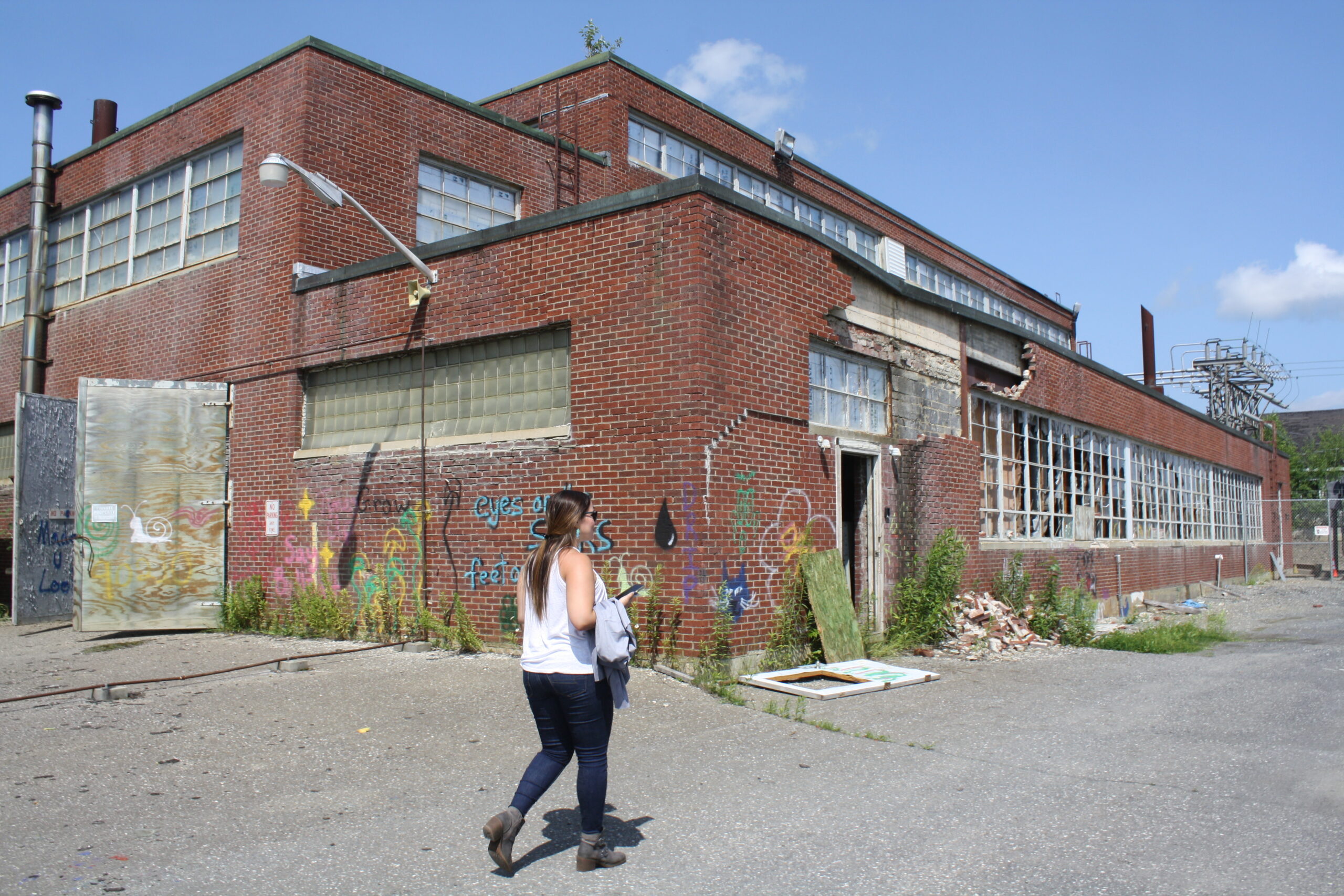
CARIBOU, Maine – Caribou kicked off a major part of its riverfront redevelopment efforts Tuesday with a public hearing on the city’s long-blighted diesel plant.
Last year, the Environmental Protection Agency awarded Caribou $900,000 to remove hazardous waste and demolish the former diesel plant and several smaller buildings near the plant. Located at 142 Lower Lyndon St., the diesel plant was once part of Caribou’s power plant, along with an adjacent steam plant, that generated power for homes and businesses.
Largely vacant since the mid-2000s, city leaders and residents want the power plant gone in order to fully revitalize the riverfront for businesses, recreational opportunities and residents. With funding to remove the diesel plant, the city now needs to gather community input before that project can begin.
The defunct power plant sits near the Aroostook River, just past dozens of residential homes and two popular boat launches. Its proximity to people and the river means that contractors will need to take extra precautions when removing hazardous waste, including asbestos, said Michelle Hersey, president of County Environmental Engineering.

Hersey’s company will oversee the project and hire a licensed asbestos abater and other contractors specialized in hazardous waste removal.
After an inspection in 2022, Hersey found 12,500 square feet of asbestos in the diesel plant’s roofing, 1,600 square feet contained in window glaze and 600 square feet in floor tiles and mastic.
That prompted Susan Saunders, a resident of Lower Lyndon St., to ask Hersey if the asbestos can be removed without releasing particles into the air.
“I live close to this project and I recently took in three foster children. My husband has serious lung problems,” Saunders said. “I just want the reassurance that this will be done safely.”
Hersey said that most of the diesel plant’s asbestos is “non-friable,” meaning that the asbestos cannot easily crumble or crush into a powder that could become airborne. But contractors will comply with federal EPA and OSHA requirements, which include highly specific storage and removal methods.
“Before anything leaves the site, it must be contained and covered many times, even if it’s not friable,” Hersey said. “There will be traffic plans [for transportation] based on what times the community decides, like if people think no earlier than 6 a.m. is best.”
In addition to the asbestos, 11,320 gallons of waste oil, stored diesel and oil-contaminated water exist within numerous unused oil drums in smaller buildings near the diesel plant. Removing that waste will also require specialized processes to avoid a spill into the Aroostook River, Hersey said.
The city and County Environmental Engineering have not set a start date for the diesel plant clean up but will hold a public meeting at least 30 days before, as required by the federal Brownfields grant funding the project.
At the meeting, nearby residents and other citizens will get a chance to ask questions and get a detailed timeline of the project, Hersey said.
Caribou’s Riverfront Redevelopment Committee also held a meeting after Tuesday’s public hearing and heard updates about other riverfront projects.
Last fall, the EPA issued an emergency action for the former steam plant in accordance with the federal Comprehensive Environmental Response Compensation and Liability Act, known as CERCLA.
The EPA will spend $2 million to remove hazardous waste from the steam plant in a project that will be separate from the city’s diesel plant removal. The 12,288-square-foot former steam plant contains 11,000 feet of asbestos pipe insulation and 14,000 square feet of surface material with asbestos.
Since that asbestos is friable and prone to becoming airborne, that prompted the EPA to take action sooner instead of waiting for Caribou to complete another Brownfields application for grant funding, said Jim Bryne, Brownfields coordinator for the EPA’s New England region.
“We are still formulating a plan for how we’re going to tackle this site,” Bryne said.
The city is also hoping to purchase the former Colby Starch factory and railroad station, located near the riverfront at the end of Water Street, with part of a $472,550 grant from the Northern Border Regional Commission.
Before Caribou can pursue that purchase, the city must complete an environmental review of both sites to comply with the National Environmental Policy Act. Northern Border Regional Commission will award Caribou $15,000 of its total grant for that review, said Karen Gorman, Caribou special projects coordinator.
The 3,000-square-foot former Colby Starch factory went defunct in the 1990s and is one of several abandoned buildings along the riverfront that have caused concerns about vandalism, which has occurred at the power plant in recent years. The building is currently for sale at $50,000 and sits on 1.2 acres of land.
After purchasing the properties, Caribou officials want to gather community input on potential redevelopment and put those goals into the eventual riverfront master plan.
The city is keeping an updated page of information about the power plant clean up and other projects on its website.
The next Riverfront Redevelopment Committee meeting will be held Tuesday, Feb. 27 at 6 p.m. at Caribou Municipal Building, 25 High St.







